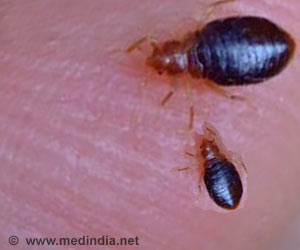Bed bugs emit substantially higher levels of histamine in infested homes and is persistent.

‘Histamine levels are 20 percent higher in bed bug-infested homes compared to histamine levels in homes without bed bugs.’





NC State post-doctoral researcher Zachary DeVries and colleagues from NC State and the N.C. Dept. of Health and Human Services conducted a Raleigh-based study to compare histamine levels in homes with and without bed bug infestation. The researchers also evaluated the extent to which treatment and time affect those histamine levels. "Histamine levels in bed bug-infested homes were at least 20 times higher than histamine levels in homes without bed bugs," DeVries said. "And these levels didn't decrease much three months after treating the infested homes with heat and insecticides."
In humans, histamines are generally released as part of an immune response. They cause inflammation and help allow other immune system chemicals to fight a pathogen or to do cellular repair work. Histamines, though, can have deleterious effects in humans, including rashes when contacted with skin and respiratory problems when inhaled - think of the allergic reactions to certain foods, pollen, mold or other environmental conditions.
"Histamines are used in skin and respiratory allergy tests as a positive control - they cause a bump in skin tests and restrict breathing in respiratory tests," DeVries said.
Bed bugs naturally give off high levels of histamine in their feces; DeVries says that bed bugs use histamine as a marker of a good place to aggregate. When bed bugs find their way into homes, they tend to aggregate in bedrooms where sleeping humans - the food source for bed bugs - spend a good part of their day.
Advertisement
The researchers also tracked histamine levels over time after having professional heat treatments occur in a subset of the infested apartments. Histamine levels did not decline significantly three months after treatment, showing the chemical's capacity to persist despite extreme heat.
Source-Eurekalert








